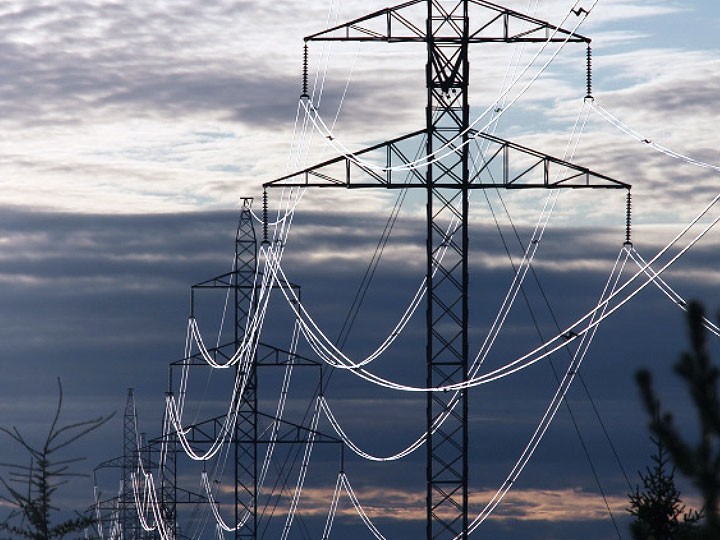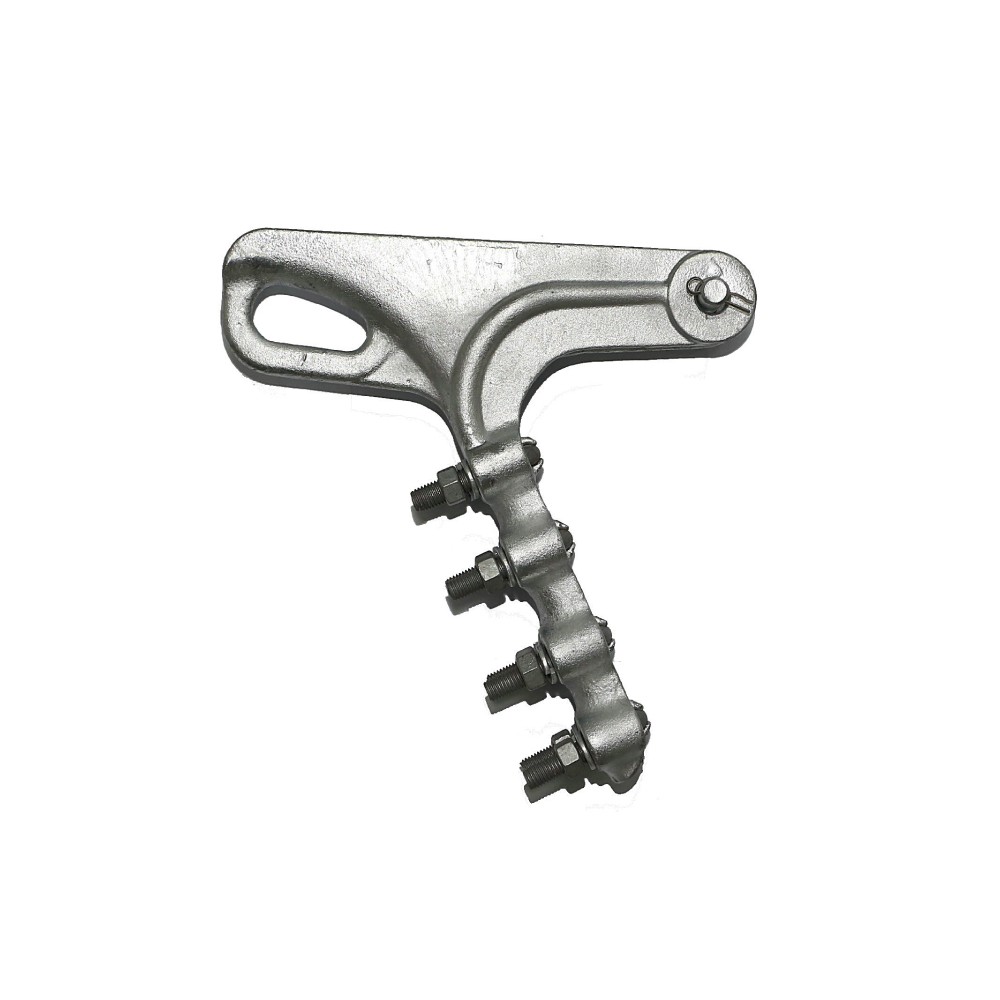- A deadend clamp plays a crucial role in the installation and maintenance of high-voltage direct current transmission lines.
- Chile is focused on building the longest HVDC transmission lines to transport energy over long distances.
Chile aims to construct the longest power transmission line to send electricity over 1500 km. The project will transport renewable energy from production areas to consumption areas. The Kimal-Lo-Aguire high-voltage direct current (HVDC) transmission line has a capacity of 3000 MW. The transmission line is more efficient for long-distance power transfer compared to traditional alternating current lines. This project will reduce energy losses during transmission to allow more efficient delivery of electricity from solar and wind plants. Due to the Atacama solar and wind resources, the project will allow large-scale solar plants to transmit electricity to other areas. The HVDC line will reduce the strain on the current infrastructure and provide a reliable solution of power. This will also help reduce the dependence on fossil fuels and the production of greenhouse gas emissions.
A deadend clamp plays a crucial role in ensuring the safety and reliability of the power grid. It terminates power conductors at the end of a transmission line. This prevents conductors from moving or sagging, which could lead to electrical faults and power outages. A deadend clamp is able to withstand mechanical loads, including tension and compression. It is also designed to reduce the risk of electrical arcing, which can damage equipment and cause fires. This makes them crucial in the construction and installation of high-voltage direct current transmission lines in Chile. This article highlights the need for power line hardware like a deadend clamp in HVDC in Chile. It will also look at the benefits and challenges facing the development in the country.
Chile’s HVDC lines utilize technological advancements.
The development of HVDC transmission lines in Chile used several technological advancements. These innovations enhance efficiency, reliability, and environmental sustainability. The HVDC line is setting new standards in renewable energy integration. It combines advanced converter technology and real-time monitoring. These innovations align with Chile’s environmental and sustainability goals. Using a deadend clamp in their development offers stability and reliability of the transmission lines. The following are the technologies used in Chile’s HVDC transmission system.

- Advanced HVDC converters – advanced HVDC lines use voltage source converters (VSC). These are more efficient and allow better control of power flow compared to traditional line-commutated converters. The VSC technology enables the HVDC line to regulate voltage and reactive power for grid stability.
- Digital grid monitoring and control systems—these tools allow real-time monitoring of the line’s health and performance. Chile’s HVDC projects use sensors, AI, and machine learning algorithms. They help predict issues like equipment failure or voltage fluctuations.
- Compat tower designs and low-impact infrastructure—the transmission lines use compact tower designs and reduced physical footprints. This needs less land, which helps balance infrastructure needs with environmental conservation efforts.
- Enhanced cybersecurity protocols – Chile’s HVDC uses advanced cybersecurity measures to secure the systems against cyber threats. These include encrypted communication channels. AI-based threat detection and multi-layered defenses.
- High-capacity cables – the transmission lines use advanced cables made with low-resistance materials like aluminum or copper alloy. The high-capacity cables allow Chile to maximize the amount of renewable power transmitted from solar farms.
- High-performance insulation materials – the HVDC systems use advanced insulation materials that resist extreme heat, aridity, and UV radiation. The materials reduce wear and tear in transmission equipment, which reduces maintenance costs.
Functions of a deadend clamp in the development of HVDC transmission lines
A deadend clamp is a crucial component in the construction and operation of HVDC transmission lines. Its main function is to anchor or terminate the conductor at key points along the transmission line. A deadend clamp plays a crucial role by securing conductors, supporting mechanical tension, reducing sag, and withstanding environmental stresses. The clamp ensures the reliability, safety, and efficiency of Chile’s long-distance HVDC projects. This also helps ease the smooth transmission of renewable energy across long distances. Listed below are the common functions of a deadend clamp in HVDC transmission lines.

- Securing and terminating conductors – the deadend clamp holds the HVDC conductors in place to provide secure termination points. The clamp prevents it from slipping to maintain consistent tension and reduces the risk of failures.
- Reducing sag and line deflection – a deadend clamp helps control the sag of transmission lines by securing conductors at points where tension changes. Reducing sag helps prevent the lines from drooping too close to the ground, which could lead to electrical faults.
- Providing structural integrity—the deadend clamps ensure the conductors are properly aligned and that mechanical stress is evenly distributed.
- Reducing risk of failure – deadend clamps reduce the risk of accidental line drops, which could lead to hazards. They maintain secure, stable transmission lines for the safe operation of the HVDC.
- Supporting mechanical tension – HVDC lines face mechanical stresses due to wind, weather conditions, and the conductor’s weight. The deadend clamps bear this mechanical load and maintain the needed tension and alignment. The clamps manage the extra strain on the conductors to ensure stability in challenging conditions.
- Withstanding environmental conditions – deadend clamps are able to withstand extreme environmental conditions. They withstand conditions such as intense sunlight, temperature fluctuations, and high winds.
Benefits of the high-voltage direct current transmission line in Chile
According to Chile’s National Energy Policy of 2021, energy generation accounts for 77% of greenhouse gas emissions. The transition to cleaner energy systems helps to lower emissions, which is a national challenge. High-voltage direct current transmission lines provide advantages for connecting renewable resources in remote areas. The lines provide Chile with an efficient, high-capacity, and environmentally sensitive solution for renewable energy integration. The HVDC will support energy independence, sustainability, and grid resilience in the country. A deadened clamp will support this by reducing the risk of electrical arcing, which can damage equipment. The following are the benefits of HVDC transmission lines in Chile.

- Efficient long-distance energy transfer – HVDC is more efficient than traditional AC for transmitting electricity over long distances. HVDC reduces energy losses and can transport electricity more effectively from solar-rich areas to other cities.
- Greater capacity for renewable integration – HVDC lines can handle large quantities of electricity generated by these solar farms to other renewables. Their high capacity reduces the strain on existing infrastructure.
- Reduced environmental impact – HVDC requires less land for installation, which reduces their ecological footprint. This is important for Chile as it aims to expand infrastructure while preserving the unique landscapes.
- Carbon neutral goals – Chile aims to decarbonize the energy sector by 2050. HVDC lines make long-distance transport of renewable power more feasible and efficient. This helps in reducing reliance on fossil fuels and speeding up the transition to a cleaner grid.
- Enhanced grid stability – HVDC lines offer better control over the flow of power than AC systems. This allows the operators to adjust the transmission as needed to stabilize the grid. The controlled flow of power helps to maintain consistent supply and balance between generation and demand.
Challenges facing HVDC lines and uses of a deadend clamp
The development of HVDC transmission lines in Chile faces various challenges due to the geography and environmental conditions. A deadend clamp helps to address most of these challenges. This is by maintaining line stability, enhancing resilience, and controlling sag. They help to ensure the safe, efficient, and sustainable transmission of renewable energy across Chile. The following are the various challenges and how a deadend clamp helps address them.

- Geographical challenges – Chile consists of mountains, deserts, and seismic activities. These conditions make it challenging to install and maintain long distance transmission lines. A deadend clamp secures the transmission lines in areas with rugged geography.
- Extreme environmental conditions – the region is characterized by solar irradiation, high winds, and extreme temperature fluctuations. These conditions can lead to material degradation and stress on transmission components. A deadend clamp can withstand intense heat, UV exposure, and arid conditions. This is because it is from corrosion-resistant materials.
- Logistical and maintenance challenges – maintenance of HVDC lines across long distances is costly. A deadend clamp simplifies maintenance by providing accessible anchor points.
- Line sag and clearance issues – HVDC lines must maintain clearance from the ground to prevent arcing. A deadend clamp mitigates sag by holding the conductor at specific tension points.
In conclusion
Chile’s high-voltage direct current transmission lines promise a transformative step in their renewable energy journey. The project will transport clean energy from renewable energy production areas to urban centers. However, the systems face several challenges like extreme weather, seismic activity, and complex terrain. Using a deadend clamp helps address these challenges by maintaining line stability, managing mechanical stress, and reducing environmental impacts. The deadend clamps anchor the conductors securely, control sag, and support the infrastructure in extreme conditions.

TTF Power Systems supports the development of HVDC transmission lines in Chile by providing power line hardware. TTF is a world-class global provider of high-quality overhead line hardware, transmission hardware, distribution hardware, conductors, insulators, cutout switches, anchoring, and grounding products. Additionally, we provide our customers with the most extensive range of products in the industry, excellent value, and knowledgeable service. Check out our catalog below and subscribe to our newsletter to receive updates about our products.

